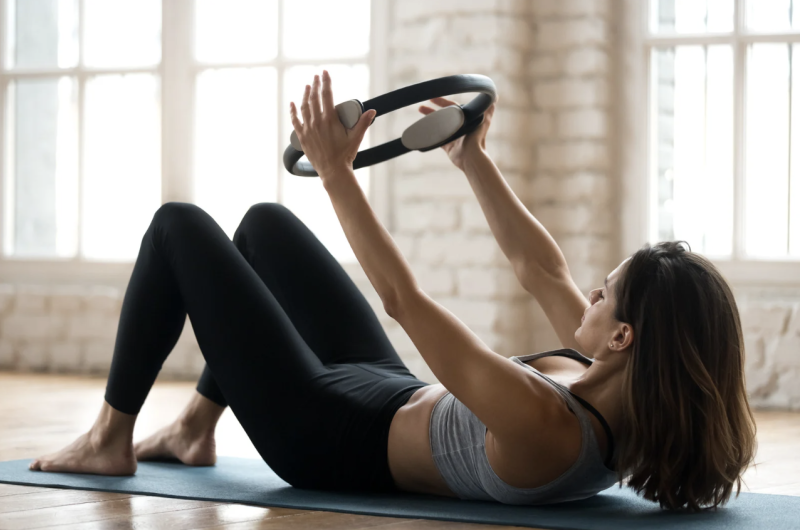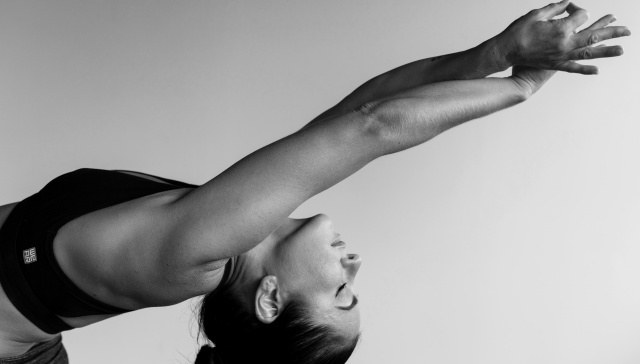Pilates

The History of Pilates
Joseph Pilates was born in Germany in 1880. A sickly child, Pilates threw himself into overcoming his ailments through bodybuilding, gymnastics, diving and other physical pursuits. He studied Eastern and Western philosophies and forms of exercise, greatly influenced by ancient Greek and Roman regimens. This provided him with the foundation to innovate a system that he developed throughout his life.
In 1912, Pilates traveled to England and was interned in a camp when World War I broke out. While there, he taught and practiced his physical fitness programme and began devising apparatus to aid in the rehabilitation of the disabled and sick.
After the war, Pilates left for America and met his wife Clara on the way to the United States. In 1926, they set up their first studio in New York City attracting a diverse population from socialites and circus performers to gymnasts and athletes. The most famous early advocates of the method include dance luminaries such as George Balanchine, Martha Graham and Ted Shawn.
Today, Pilates is an internationally recognised system of physical and mental conditioning offering a path to total health. It offers a solution to those with restricted mobility as well as to elite athletes.
The Pilates Principles
The Pilates method is more than a series of cardio exercises; it is a philosophy and approach to life. Unlike many other forms of physical fitness, Pilates is a mind-body system that addresses far more than the quantifiable aspects of human movement such as strength, range of motion, and endurance. Pilates strives to improve life through developing full body stability, refining posture, improving movement and reeducating muscle recruitment patterns.
The core principles of Pilates are key to achieving body-mind connection and performing the exercises successfully:
Breathing. Good breathing technique is essential for good health and posture. We can gain true physical awareness by understanding how to breathe properly.
Concentration. Pilates recognised the value of clearing the mind prior to physical activity. He believed that emotional and psychological states could not be isolated from the physical.
Center. All Pilates exercises start from a stable physical center, which must be located and maintained throughout.
Precision. The goal of each Pilates exercise is very specific, and as a result the details of each exercise must be executed in a precise fashion.
Flow. It is important to keep movement and breath flowing. This avoids tension, tightness and discomfort.
Control. The aim of Pilates is to achieve the control of mind, body and movement. Control, however, should not be limiting or obsessive.
Classical vs. Contemporary Pilates
Classical Pilates focuses on preserving the original teachings of Joseph and Clara Pilates and the equipment used to practice Pilates, featuring the exact specifications as those built by its founder. Classical Pilates is taught within the order of the exercises Joseph created for the reformer and the mat.
Contemporary Pilates integrates various traditional Pilates exercises with other systems like yoga, fitness training and physiotherapy. It might also include props such as resistance bands, foam rollers, and stability balls. Contemporary Pilates includes additional exercises as well as modifications to the original exercises.
Benefits of Pilates
Pilates develops many aspects of physical fitness including strength, flexibility, coordination, speed, agility and endurance. Below are just some of the benefits a regular Pilates practice can bring:
Core strength (balance): Perhaps the biggest advantage of making Pilates part of your wellness regimen is its ability to strengthen your core stability. Your core is the center of your body, including all the muscles in your midsection (front, back and sides)—almost every movement you make relies on your core muscles, and when you can develop and enhance these muscles, movements can feel easier. A strong core improves balance as well, making physical activities more accessible and efficient.
Flexibility: Flexibility is the most neglected component of fitness. Rather than using static stretches, Pilates focuses on movements while stretching. This means the muscles are warm as you stretch, allowing you to go further with less pain and injury. Improving and strengthening your flexibility can also mean better posture, balance, mobility and state of mind—which is a strong aspect of every Pilates exercise.
Spinal and joint mobility: Pilates encourages students to target the muscles that protect and support their spine. This means less low back pain. A low impact and low intensity workout, Pilates’ movements are also easy on the joints.
Body awareness: Pilates can help you connect with your body to learn how to best move and function. It’s not as much about limitations as it is about finding ways to do what you need and want to do.
Overall physical strength: Pilates is also a form of strength training. You can perform Pilates on a mat using your bodyweight or small props, or train with Pilates equipment that uses spring tension for weight resistance. Pilates gets you performing movements that improve overall strength, working large muscles like your glutes as well as often neglected smaller muscles like your inner thighs.
Equipment v. Mat Classes
The basic mat pilates programme is designed to be performed with no equipment, although you can use props for your home workout. These include the Swiss ball, resistance band, magic circle or hand and leg weights to increase the element of strength training. Matwork classes are usually easier to find than those in equipment-based pilates studios unless you’re in a major city, especially since less supervision is required for the former.
Pilates exercises can also be taught on a range of specially-designed equipment such as the reformer, wunda chair or cadillac. These usually employ spring resistance and pulley systems to increase intensity or bridge the gap in terms of strength and flexibility. If you are injured or recovering from serious illness, private sessions on Pilates equipment would be best. Your pilates instructor can guide you to train your abdominal muscles progressively on machines to support your upper body
Getting started
Before you embark on your first pilates session, you should check your fitness level and figure out exactly what you want to achieve—whether it’s weight loss or back pain. It would be best to do an assessment with a certified teacher who can guide you into a full body pilates workout safely and map your progression.
If you are pregnant, Pilates is an effective form of exercise to maintain both throughout pregnancy and after birth. However, make sure to check with your doctor to make sure you are ready for total body movement.
Most people find that performing a Pilates workout at least two or three times a week gives the best results. It is recommended that you combine Pilates with aerobic activity such as running, swimming or HIIT.
Moving through life in harmony with all around and within is the ultimate achievement of the practice of Pilates.
Sources
Pilates-2nd Edition by Isacowitz, Rael (2014)
Pilates for Beginners (From Couch to Conditioned: A Beginner's Guide to Getting Fit) Paperback – 15 Aug. 2011 by Denis Kennedy, Dominique Jansen, Sian Williams
Pilates for Everyone: 50 Exercises for Every Type of Body (2021) by Micki Havard
 Live Yoga Teachers
Live Yoga Teachers
